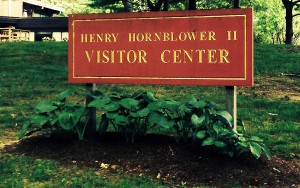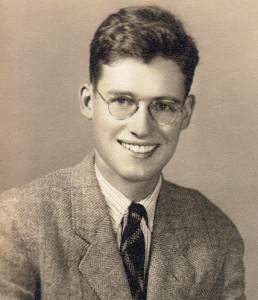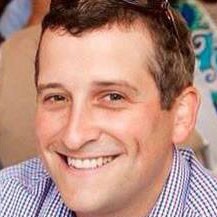 Throughout my childhood and teenage years I was under the impression that my ancestors had traveled to Plymouth on the Mayflower. Being young and naive, I had no reason to question my parents’ long-held beliefs. Given that my grandfather, Henry Hornblower II (1917–1985), founded Plimoth Plantation in 1947, no one ever questioned my Mayflower lineage. And with a last name like Hornblower, who would?
Throughout my childhood and teenage years I was under the impression that my ancestors had traveled to Plymouth on the Mayflower. Being young and naive, I had no reason to question my parents’ long-held beliefs. Given that my grandfather, Henry Hornblower II (1917–1985), founded Plimoth Plantation in 1947, no one ever questioned my Mayflower lineage. And with a last name like Hornblower, who would?
Around the time I started college my parents informed me that we did not in fact have any actual ancestors on the Mayflower. It was all hypothetical and nothing had been proven. Whoops! Trying to correct my lies, I started telling people the “truth” and have been since then. That is, until about a month ago, when Senior Genealogist of the Newbury Street Press Chris Child stopped by my office with a packet of papers and a grin on his face. He told me, “I thought this might interest you. In my spare time I was able to find a direct connection between your great-grandmother Eleanor Greenwood and Mayflower passenger Stephen Hopkins.” I was in complete shock. My grandfather didn’t even know about this!
 Chris adds: “When I first looked at the ancestry of Henry’s grandfather, the idea that he had no Mayflower ancestry did not seem surprising at all. Having worked with thousands of members over the years, finding an ancestor on the Mayflower or confirming or disproving a Mayflower tradition comes up with such frequency that I have developed an eye for surnames and locations that could likely go back to the Mayflower. By and large, as I looked over the Hornblower/Greenwood ancestors, nearly all of the colonial families went back to Massachusetts Bay rather than Plymouth. These included some of my own ancestors – Nathaniel Whiting and Hannah Dwight of Dedham, Massachusetts – and many other early families of Dedham, Watertown, and Concord, all areas that I generally do not consider ‘Mayflower country.’
Chris adds: “When I first looked at the ancestry of Henry’s grandfather, the idea that he had no Mayflower ancestry did not seem surprising at all. Having worked with thousands of members over the years, finding an ancestor on the Mayflower or confirming or disproving a Mayflower tradition comes up with such frequency that I have developed an eye for surnames and locations that could likely go back to the Mayflower. By and large, as I looked over the Hornblower/Greenwood ancestors, nearly all of the colonial families went back to Massachusetts Bay rather than Plymouth. These included some of my own ancestors – Nathaniel Whiting and Hannah Dwight of Dedham, Massachusetts – and many other early families of Dedham, Watertown, and Concord, all areas that I generally do not consider ‘Mayflower country.’
“The only ancestor I found born beyond the Bourne Bridge was Henry’s great-great-great-great-great-great-grandmother ‘Elizabeth Smith,’ wife of William Stratton of Athol, Massachusetts. Elizabeth and William married at Athol in 1780, and many online trees gave her birth in 1754 in Truro. However I could not find any Elizabeth Smith born in that year. As I researched this further, I realized she was actually the widow Elizabeth (Lombard) Smith, daughter of James and Thankful (Dyer) Lombard and widow of Moses Smith. James and Thankful were Truro natives and their first eight children were recorded there between 1754 and 1770 (Elizabeth being the eldest). In 1771, James Lombard purchased 112 acres of land in Athol and they had two more children there. Thus, this Cape Cod couple journeyed 175 miles inland to northern central Massachusetts in the late eighteenth century, to an area I generally have not associated with Mayflower descendants. The ancestry of James and Thankful is almost entirely in Plymouth and Barnstable Counties, and using the Mayflower Silver Book series, Thankful is nicely profiled as a fifth generation descendant of Stephen Hopkins through his son Giles, who also came on the ship. Thus Henry’s grandfather did have one Mayflower line, back twelve generations.”
Here is the line:
- Stephen Hopkins (c.1579–1644) = Mary (likely Kent alias Back) (bur. 1613)
- Giles Hopkins (bap.1607/8–1688-90) = Catherine Wheldon
- Caleb Hopkins (1650/51–bef. 1728) = Mary Williams
- Thankful Hopkins (1709–1783) = Ambrose Dyer (1709–1792)
- Thankful Dyer (1733–1818) = James Lombard (1731–1812)
- Elizabeth Lombard (1754–1821) = (2) William Stratton (c.1736–1805)
- Sally Stratton (1790–1843) = Levi Darby (1786–1873)
- Philander Darby (1816–1902) = Viola Dunn (1818–1891)
- Ella Viola Darby (1849–1924) = George Wade Cann (1849–1916)
- Mary Alberta Cann (1875–1963) = Levi Heywood Greenwood (1872–1930)
- Eleanor Greenwood (1896–1983) = Ralph Hornblower (1891–1960)
- Henry Hornblower II (1917–1985) = Dorothy Mortimer Shapard (1920–2002)
My family takes great pride in the work my grandfather accomplished to preserve the history and culture of the Pilgrims and the Native Wampanoag People. The story of their struggle to survive in a new world is fascinating and should be experienced more than once in a lifetime. I encourage everyone both young and old to visit Plimoth Plantation, Plymouth Rock, and the Mayflower II whenever they get a chance.
Share this:

About Henry Hornblower
Henry Hornblower became the Marketing Manager at NEHGS in February of 2014. He brings with him 11 years of financial analysis, marketing and event management experience. Most recently he worked for Agganis Arena at Boston University where he managed the ticket sales for all concerts, events, and outside shows. He grew up locally in Dedham and attended St. Sebastian’s High School in Needham. Henry holds a B.A. in Public Policy from Hamilton College and also spent a semester abroad in Stockholm, Sweden where he studied European Economics. His interest in genealogy can be attributed to his many childhood visits to Plimouth Plantation and his father’s lifelong passion for history and antiquities. In his spare time he enjoys golf, tennis, squash, skiing, attending concerts, and cheering on all the sports teams in Boston.View all posts by Henry Hornblower →